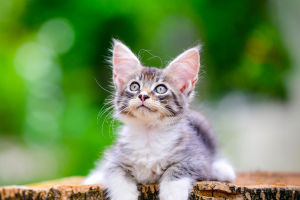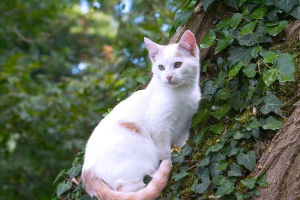Ever found yourself jolted awake by the thundering paws of your cat racing across the hallway in the middle of the night?
Maybe you've wondered how that calm, sunbathing ball of fluff transforms into a prowling shadow once the lights go out.
The secret to this nightly transformation lies in your cat's fascinating biology and age-old instincts. Tonight, let's step into the world of feline night hunters to understand the real reason behind their after-dark antics.
The Science Behind a Cat's Nighttime Instincts
Cats are not strictly nocturnal, but rather crepuscular—meaning their natural energy peaks at dawn and dusk. This trait dates back to their wild ancestors, who found early mornings and evenings safest for hunting.
1. Twilight activity helps cats avoid the biggest threats and competition.
2. Many small prey animals stir at these times, giving hungry cats an advantage.
3. Household cats retain this rhythm, even if their meals are served in a bowl.
In the wild—or a quiet living room—this is when their senses come alive. Your cat's zoomies aren't mischief; they're a reenactment of centuries-old survival tactics.
Nights Are for Hunting: The Ultimate Sensory Playground
Feline sensory adaptations set the stage for their night adventures.
1. Exceptional night vision: Cats' eyes have a high number of rod cells and a reflective layer (tapetum lucidum) that amplifies even faint light, allowing them to spot movement in near darkness.
2. Sensitive whiskers and acute hearing: Vibrissae (whiskers) pick up air currents and subtle vibrations, while ears swivel independently to pinpoint tiny sounds—even a mouse scurrying beneath the floorboards.
3. Stealthy movement: Soft paw pads and retractable claws ensure they move like silent shadows.
These tools help your cat chase, pounce, and "hunt" toys (or household slippers) with astonishing accuracy, even while you're asleep.
What Are Cats Really Doing at Night?
That mysterious nocturnal routine serves real psychological and physiological needs:
1. "Hunting" games: Even well-fed cats need to practice their predatory behaviors. Toys, paper balls, and the occasional sock all become surrogate prey.
2. Territory patrols: Cats obsessively check their space for changes at night, reflecting the need to guard territory and detect potential invaders.
3. Zoomies and "phantom chases": Short, wild bursts of running mimic a prey chase, help manage stress, and burn off energy.
4. Communicating with you: Nighttime "gifts" or yowls can be your cat's way of showcasing their successful "hunts" or seeking your attention.
For many indoor cats, night brings the most stimulation, especially if the daytime is quiet or lonely.
How This Impacts Everyday Life—And What You Can Do
Those nighttime antics aren't just quirky—they're signs your cat needs engagement.
1. Play before bed: Interactive "hunting" sessions with feather toys or laser pointers help burn energy and satisfy predatory urges.
2. Scheduled feeding: Mimicking the natural hunt-eat-groom-sleep pattern with puzzle feeders or treat balls can create a calming, predictable routine.
3. Safe environment: Ensuring windows are secure and eliminating small choking hazards reduces risks when your cat is most active and curious.
If nighttime activities become disruptive, experts recommend gently keeping bedroom doors shut and increasing daytime play to manage excess energy.
Lessons from the Night: Understanding Feline Nature
Tuning into your cat's nightlife isn't just about better sleep—it's a window into who they really are. Recognizing these after-hours hunts as expressions of wild instinct helps us provide more meaningful, cat-friendly enrichment and deepen our bond with these remarkable companions.
How has your cat surprised you at night? Maybe you've discovered a missing sock stashed under the couch, or watched your feline leap for shadows with grace and purpose. If you've tried creative evening rituals or have insights into your own cat's moonlit behaviors, share your story—sometimes, those mysterious midnight moments are the ones that teach us most about the wild creature curled up on our bed.


